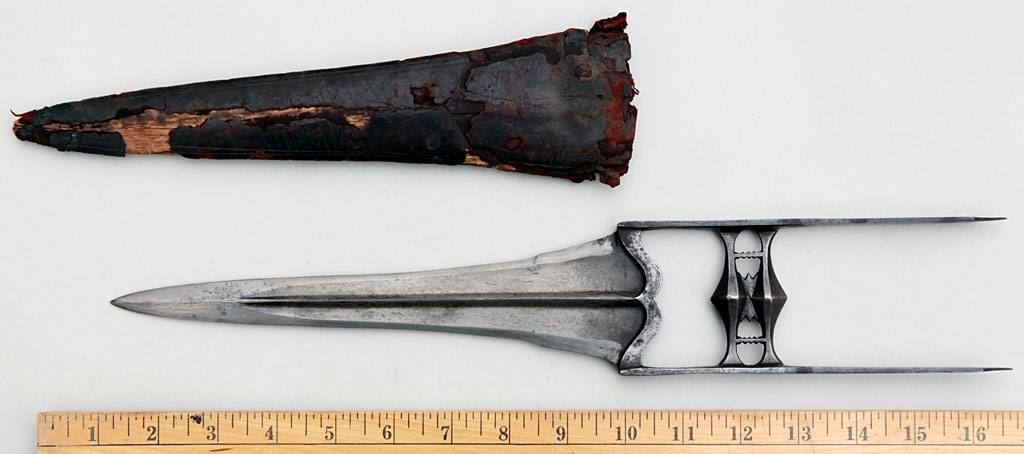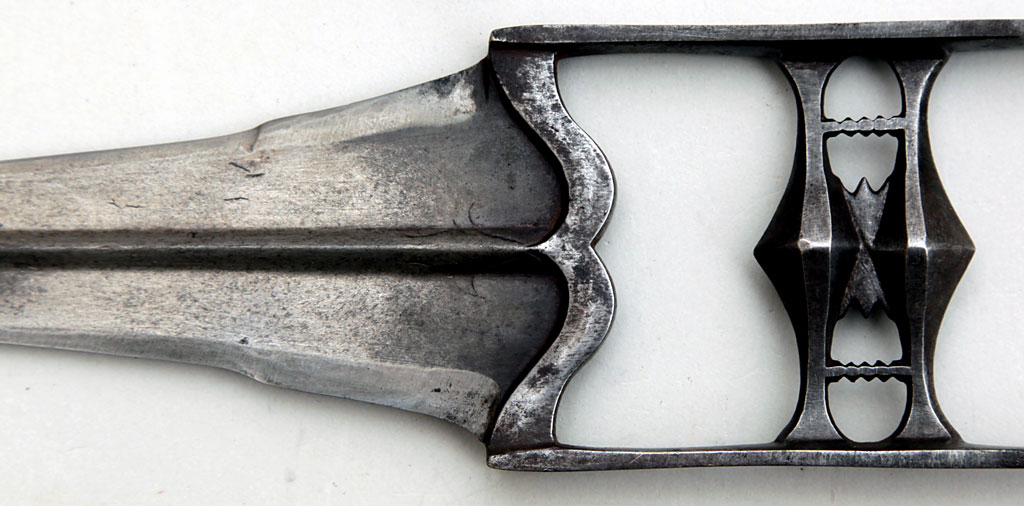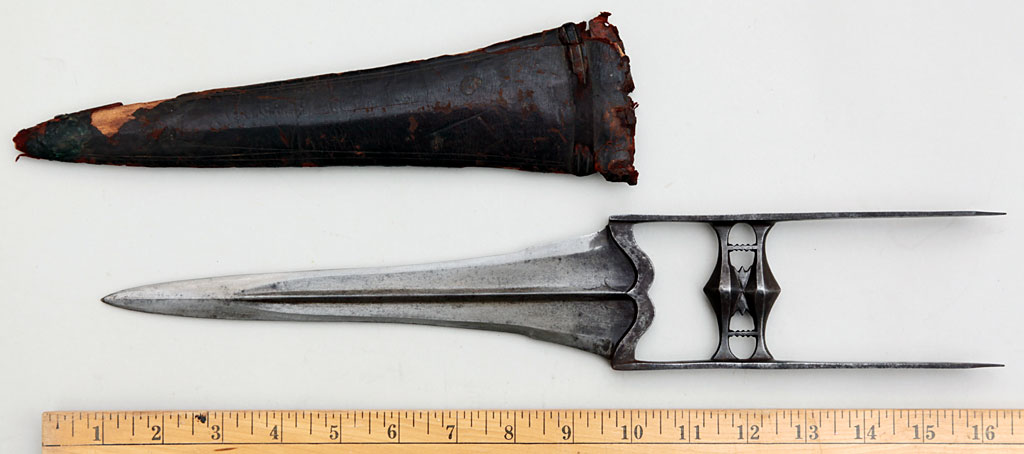
The jamadhar ('death tooth'), better known as a katar, is a style of dagger limited to the Indian Subcontinent. This example is typical in having a straight double edged blade abruptly arising from a recurved cross piece dipping in the center into the pronounced midrib of the blade and into a lightly incised trefoil. Hand and wrist guards have been attached parallel to the blade on either side of this base and a grip is formed by a centrally fused pair of cross bars. The 9¼ inch (23.5 cm) blade of this example has a well defined and moderately high central mid rib on each face. Wootz Damascus grain is only faintly evident on the flats of a blade also showing evidence of recent regrinding of the edge bevels and the moderately thickened tip. Overall length is 15½ inches (39.3 cm) with a weight of 9.1 ounces (259 grams). The dagger is accompanied by a very old wooden sheath covered by old dried leather with cracking, scuffing and full thickness loss. Within the sheath, which covers the cross piece, overall length is 16½ inches (42 cm) with a weight of 10.6 ounces (302 grams). Lew dated this katar to the 19th century.




